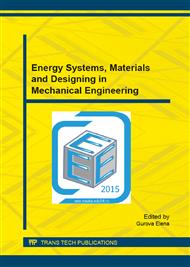[1]
A.B. Petrochenkov, Regarding to Implementation of Genetic Algorithms in Life Cycle Management of Electrotechnical Equipment, Proc. of the Second International Conference on Applied Innovations in IT, E. Siemens (editor in chief) et al. Kothen, Anhalt University of Applied Sciences, 2014. – pp.79-83.
Google Scholar
[2]
D. E. Goldberg, Genetic Algorithms in Search, Optimization and Machine Learning, Addison-Wesley, (1989).
Google Scholar
[3]
H. Aytug , M. Khouja and F. E. Vergara, Use of genetic algorithms to solve production and operations management problems: A review, International Journal of Production Research, 2003, 41: 17, pp.3955-4009, DOI: 10. 1080/00207540310001626319.
DOI: 10.1080/00207540310001626319
Google Scholar
[4]
D. Garg, K. Kumar and Meenu, Availability Optimization for Screw Plant Based on Genetic Algorithm, International Journal of Engineering Science and Technology, vol. 2, No. 4, pp.658-668, (2010).
Google Scholar
[5]
S.P. Sharma, Y. Vishwakarma, Availability optimization of refining system of Sugar Industry by Markov process and Genetic Algorithm, Proc. of the 2014 International Conference on Reliability, Optimization and Information Technology, art. no. 6798290, pp.29-33.
DOI: 10.1109/icroit.2014.6798290
Google Scholar
[6]
E.V. Cota, L. Gullo, R. Mujal, Applying Design for Reliability to increase reliability confidence, Proc. of Annual Reliability and Maintainability Symposium, 2014, art. no. 6798454, doi: 10. 1109/RAMS. 2014. 6798454.
DOI: 10.1109/rams.2014.6798454
Google Scholar
[7]
A.B. Petrochenkov, Regarding Life-Cycle Management of Electrotechnical Complexes in Oil Production, Russian Electrical Engineering, 2012, vol. 83, No. 11., pp.621-627. doi: 10. 3103/S1068371212110090.
DOI: 10.3103/s1068371212110090
Google Scholar
[8]
A.B. Petrochenkov, On the Problem of Development of Models of Processing Operations Performed during Repair of Electrical Engineering Complex Components, Russian Electrical Engineering, 2013, Vol. 84, No. 11, p.613.
DOI: 10.3103/s1068371213110096
Google Scholar
[9]
N.A.J. Hastings, Physical Asset Management, 2015. doi: 10. 1007/978-3-319-14777-2_3.
Google Scholar
[10]
A.B. Petrochenkov, An Energy-Information Model of Industrial Electrotechnical Complexes. Russian Electrical Engineering, 2014, Vol. 85, No. 11, p.692–696. doi: 10. 3103/ S1068371214110108.
DOI: 10.3103/s1068371214110108
Google Scholar
[11]
A.B. Petrochenkov, A. V. Romodin, Energy-optimizer complex, Russian Electrical Engineering, 2010, vol. 81, no. 6, pp.323-327. doi: 10. 3103/S106837121006009X.
DOI: 10.3103/s106837121006009x
Google Scholar


